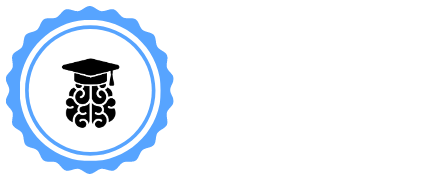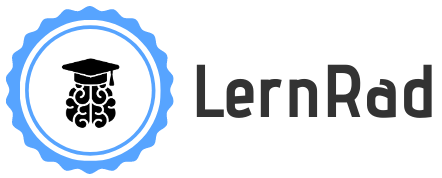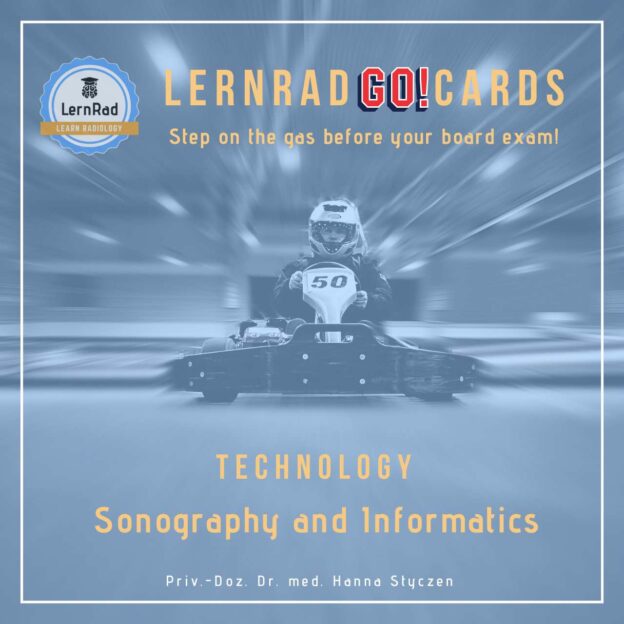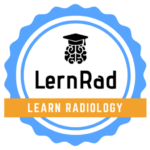In this Go!Cards set, you will find a total of 41 questions and answers on the topic of Sonography and Informatics to prepare for the Radiology Board Examination. You can quickly review and test the most important facts before the exam to see where your knowledge stands.
Our Go!Cards were developed according to the current European Training Curriculum for Radiology of the European Society of Radiology (ESR).
This set includes 41 questions and answers with the following subchapters:
- Fundamentals
- Device and Technique
- Doppler-Sonography
- Informatics
Tip: You should view the flashcards in full-screen mode, then they appear a bit larger. 🙂 We recommend using Chrome or Edge as a browser, as other browsers may display minor errors with the Go!Cards.
For the duration of your subscription (which will be automatically renewed each month if not canceled), you have full access to the Go!Cards. You can cancel your subscription at any time. Sharing your access data with third parties is, of course, not permitted (see also our general terms and conditions).
The specific learning objectives corresponding to the ESR’s European Radiology Training Curriculum for Radiology are:
B-I-15 Principles of Imaging Technology & Molecular Imaging
Knowledge Ultrasound
- To explain the relative value of an ultrasound examination for the various organ systems and indications
- To describe the nature of ultrasound waves, their propagation, velocity, intensity and the equations that describe them
- To describe the principles of acoustic impedance and to list the tissue properties that determine it
- To describe the frequency of transmission to achieve satisfactory imaging
- To describe the physical principles of the piezoelectric phenomenon
- To list factors that determine the resonance frequency of the piezoelectric element
- To explain the principles of continuous and pulsed emission ultrasound
- To list the factors that focus and unify the ultrasound beam
- To describe the differences between the A, B and TM modes of ultrasound
- To explain the principles of spatial and temporal resolution of ultrasound images as applied to good image formation
- To explain the principles of the Doppler effect and the application of angled beam and direction of flow
- To describe the application of pulsed and continuous wave Doppler and spectral waveform analysis
- To describe the thermal and mechanical biological effects of ultrasound waves, including production of the cavitation phenomenon
- To describe the different types of transducers in ultrasound imaging
- To list the appropriate transducers according to the organs imaged
- To describe criteria for a good ultrasound image
- To describe the major artefacts on ultrasound imaging including reflection, diffusion and speckle and to list their respective causes
- To describe the indications for the use of ultrasound contrast media in the study of various organs / organ systems
Knowledge Contrast Media/Agents
- To understand the molecular structure, pharmacology, classification, dose and side effects of all radiographic, MRI and ultrasound contrast media
- To explain the principles of contrast ultrasound media and the relation between the ultrasound beam and microbubbles
B-I-16 Principles of Medical Imaging Informatics
Knowledge of radiology workstations, networks, RIS, PACS and EPR
- To have a basic knowledge of computer networks and cloud services, including the relevant security and cybersecurity issues
- To have a basic knowledge of different options for storage of digital data
- To understand basic components of a radiology workstation (both hardware and software)
- To have a basic knowledge of monitor and lightning requirements for different imaging modalities
- To understand basic techniques of Picture Archiving and Communication Systems (PACS) and Radiology Information Systems (RIS)
Knowledge of standards and codes
- Basic knowledge of DICOM and HL7. To be aware of the role of IHE in using these standards
- Basic knowledge of the main clinical medical image formats, including DICOM
Knowledge of radiological software applications
- To have a basic knowledge of Hospital Information Systems (HIS), Electronic Medical Records (EMR) and their relation to information systems used in Radiology
- To have a knowledge of web-portals for patients
- To know the basic aspects of teleradiology and telemedicine
- Have a basic knowledge of Clinical Decision Systems (CDS)
- To understand the functioning and application of Artificial Intelligence (AI) tools (based upon Machine Learning and Deep Learning)




